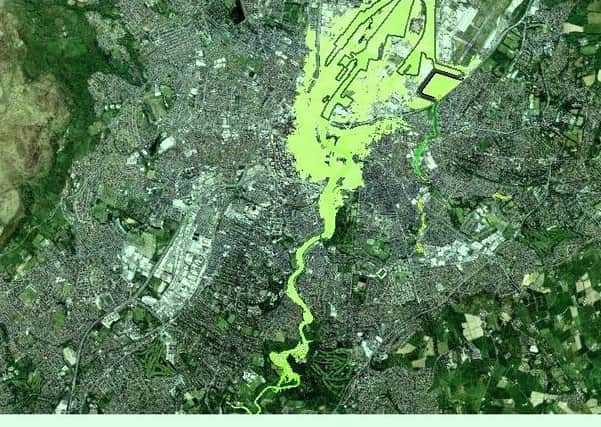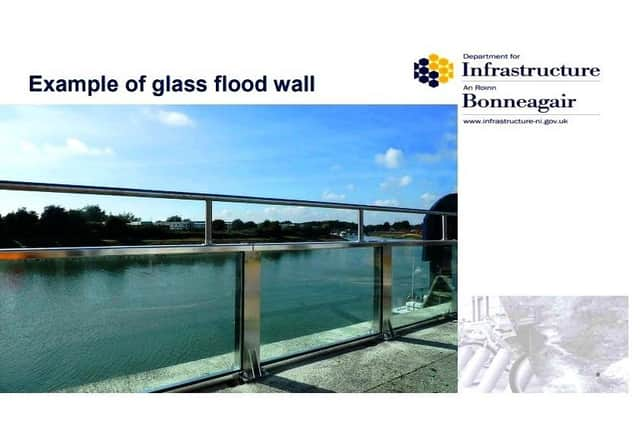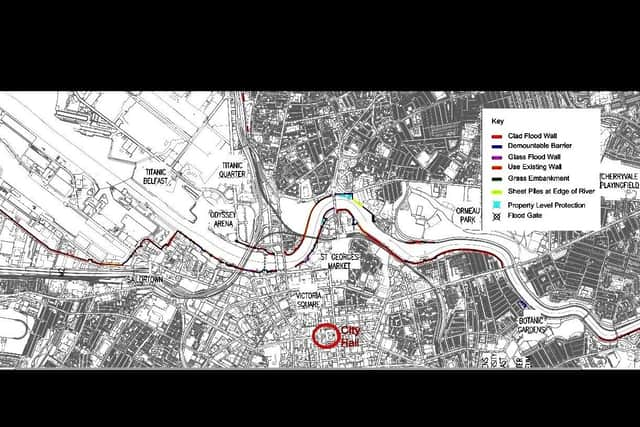Belfast to be made flood-proof for decades with £18m barriers plan


Costing £17.9m, contractors are now being sought to build the Belfast Tidal Flood Alleviation Scheme – just one of a number of projects designed to defend the Province’s settled areas from rising waters.
The scheme has been in the pipeline for some time, and yesterday Infrastructure Minister Nichola Mallon signed a confirmation order, effectively sealing the deal for the public spending.
Advertisement
Hide AdAdvertisement
Hide AdIt comes mere days after she similarly signed off schemes for Newcastle (£6.5m) and Newry (£2.9m).


Previous blueprints from the department show that the bulk of the work is expected to involve concrete walls, possibly clad in brick, around the banks of the Lagan – running all the way from Duncrue Street in north Belfast to Stranmillis in the south, where sea tides have much less effect.
Some other portions of the barrier would be made of see-through glass.
In a statement announcing the move, SDLP MLA Ms Mallon said: “This scheme design takes into account the latest projections on climate change, and mitigates against future sea level rises for Belfast City and the tidal River Lagan which extends from Belfast Harbour to Stranmillis Weir.
Advertisement
Hide AdAdvertisement
Hide Ad“Once complete, it will provide a high level of protection up to the mid-2080s and can be adapted according to future sea rise level predictions.”


The department has said that “the impact of climate change causing sea level rise will increase the number of properties at risk [in Belfast] to over 3,400 (2,640 residential and 770 commercial) by 2065”.
This will grow to over 7,900 (6,050 residential and 1,860 commercial) by 2115, it adds.
It also said much of the city centre lies between 1m to 2m (3.3ft to 6.6ft) below “extreme tide levels”, placing it at high risk.
Advertisement
Hide AdAdvertisement
Hide AdIn 2018, a report from the department said approximately 45,000 properties (or 5% of the properties in Northern Ireland) were located within a river or coastal floodplain, or in areas at risk of flooding from heavy rainfall.
It added that climate change is expected to push the number of properties at risk up by 39% by the 2080s.
The Royal Society of London – arguably the most prestigious scientific body on Earth, founded in 1660 and previously led by Sir Isaac Newton – says tidal gauges and satellites show the global sea level is rising at about 1.4 inches per decade, largely due to man-made CO2 pollution.
It adds that this has increased in recent decades, and that the minimum expected rise is between 1.3 and 2.6 feet by 2100 (though it could get “considerably higher”.
Advertisement
Hide AdAdvertisement
Hide AdIt had been previously been envisaged that work would take about a year, and would begin in the winter of 2019/20.
In January 2014, this reporter witnessed extremely narrow escapes for Belfast residents and businesses, with men piling up sandbags against their homes in the densely-packed Sydenham district as the Connswater River rose to within inches of bursting its banks.
The Lagan Weir, the anti-flood barrage which is supposed to protect the city, came within less than eight inches (20cm) of being breached during the surge that day.
Read more from this reporter:
Advertisement
Hide AdAdvertisement
Hide AdA message from the Editor:
Thank you for reading this story on our website. While I have your attention, I also have an important request to make of you.
With the coronavirus lockdown having a major impact on many of our advertisers — and consequently the revenue we receive — we are more reliant than ever on you taking out a digital subscription.
Subscribe to newsletter.co.uk and enjoy unlimited access to the best Northern Ireland and UK news and information online and on our app. With a digital subscription, you can read more than 5 articles, see fewer ads, enjoy faster load times, and get access to exclusive newsletters and content.
Advertisement
Hide AdAdvertisement
Hide AdVisit https://www.newsletter.co.uk/subscriptions now to sign up.
Our journalism costs money and we rely on advertising, print and digital revenues to help to support them. By supporting us, we are able to support you in providing trusted, fact-checked content for this website.
Alistair Bushe
Editor